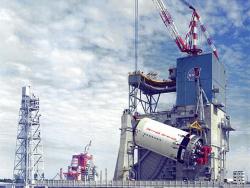The St. Charles Avenue Streetcar Line is the oldest surviving interurban-urban passenger rail transportation system in the United States. Originally incorporated as the New Orleans Carrollton Rail Road in 1833, service began in 1835. A variety of motive power had been used including horses, mules, overhead cable, steam engines, and ammonia engines before electrification in 1893. The 900-series cars presently in service were designed and built by the Perley A. Thomas Car Company of High Point, North Carolina, in 1923 to 1924.
Mechanical
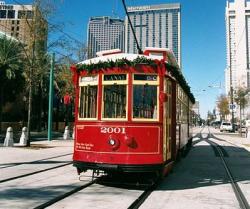
New Orleans State: LA Zip: Country: USA Website: http://www.asme.org/about-asme/history/landmarks/topics-m-z/rail-transportation---2/-101-st--charles-avenue-streetcar-line-%281835%29, https://www.asme.org/getmedia/40ef6e7c-697d-4f77-8daa-059a37f698b3/101-St-Charles-Avenue-Streetcar-Line-1835.aspx Creator: Perley A. Thomas Car Company
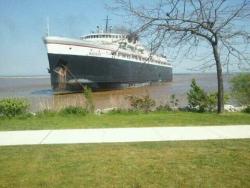
The two 3,500-hp steeple compound Unaflow steam engines powering the S.S. Badger represent one of the last types of reciprocating marine steam engines. Built by the Skinner Engine Company, most Unaflow engines are single expansion. These feature tandem high- and low-pressure cylinders separated by a common head. The Badger's four Foster-Wheeler Type D marine boilers, which supply 470-psig steam to the engines, are among the last coal-fired marine boilers built.
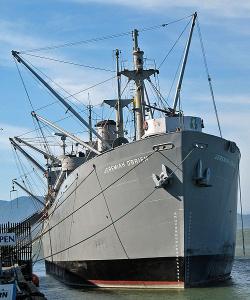
The SS Jeremiah O'Brien, an emergency cargo vessel of the type EC2-S-C1 better known as Liberty Ships, is one of two operative survivors of 2,751 ships, the largest fleet of single class ever built. The other is the SS John W. Brown, now in Baltimore (not operative at the time of the landmark designation). Between March 1941 and November 1945, eighteen US shipyards produced 2,751 ships. The design stressed minimum cost, rapidity of construction, and simplicity of operation. The original design and configuration have not been altered.
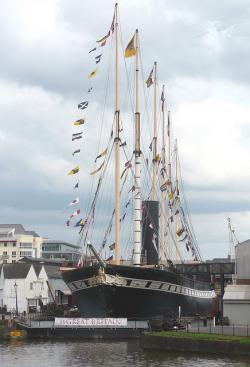
The innovative SS Great Britain, launched in 1843, was the first iron-hulled, screw-propelled ship to cross any ocean and led mercantile history into British domination in the late nineteenth century. Standard practice of naval and merchant ship construction derived from this ship. The compartmented hull, unprecedented 1,500-horsepower engine with chain drive, and many other seminal features were the designs of Isambard Kingdom Brunel. New design features included a balanced rudder, an electric log, a double bottom, and water-tight bulkheads.

George Washington's concern over standardization of rifles for the Continental Army led to the formation of national armory and to his selection of Springfield as its site. Completed in 1794, it was the first national armory in the United States. Like the Robbins and Lawrence Armory, the Springfield Armory was an outstanding machining center for the design and mass production, employing notable engineers such as Thomas Blanchard (1788-1864), Thomas Warner, and Cyrus Buckland.
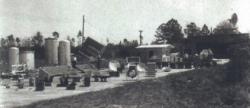
Gainesville State: FL Zip: Country: USA Website: http://www.asme.org/about-asme/history/landmarks/topics-m-z/research-and-development/-223-solar-energy-and-energy-conversion-laboratory, https://www.asme.org/getmedia/6ab985e7-a7b5-4c91-b4d7-8c32af04334c/223-Solar-Energy-and-Energy-Conversion-Laboratory.aspx Creator: Farber, Erich
This highly diverse facility has pioneered the development of solar energy applications worldwide. The Solar Energy and Energy Conversion Laboratory (SEECL) was unique in developing practical solar energy devices based on established principles of thermodynamics, heat transfer, and fluid mechanics long before solar energy was considered a serious energy alternative.
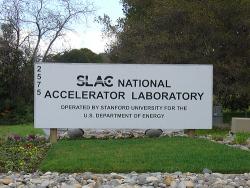
The Stanford Linear Accelerator Center was renamed in 2009 to the SLAC National Accelerator Laboratory.
Notable for: unique electromechanical devices and systems in the longest accelerator in the world
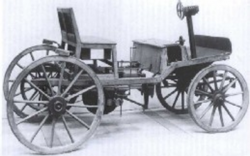
Vienna State: Zip: Country: Austria Website: http://www.asme.org/about-asme/history/landmarks/topics-m-z/road-and-off-road-transportation/-203-siegfried-marcus-car-%28ca--1875%29 Creator: Marcus, Siegfried
Siegfried Marcus (1833-1898), a remarkable engineer and manufacturer, lived most of his life and died in Vienna, leaving his most important legacy — an experimental automobile resembling today's modern car and the oldest extant automobile known worldwide. Marcus' second car, built circa 1875 (a more specific date still being investigated by historians), is believed to be the first vehicle powered by a four-cycle engine and the first to use gasoline as a fuel, featuring the first carburetor for a gasoline engine and the first magneto ignition.
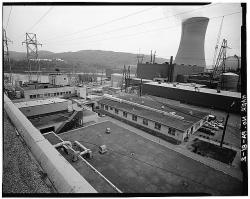
Shippingport State: PA Zip: 15050 Country: USA Website: http://www.asme.org/about-asme/history/landmarks/topics-a-l/electric-power-production-nuclear/-47-shippingport-nuclear-power-station-%281958%29, https://www.asme.org/getmedia/c64a220f-030c-4384-8336-7d9857248322/47-Shippingport-Nuclear-Power-Station.aspx Creator: Duquesne Light Company
The first commercial central electric-generating station in the United States to use nuclear energy was the Shippingport Atomic Power Station of the Department of Energy and the Duquesne Light Company. In a dramatic high-tech display, ground was broken in 1954 during dedication ceremonies by President Dwight D. Eisenhower, who also opened it on May 26, 1958, as part of his "Atoms for Peace" program. Shippingport is located on the Ohio River about 25 miles from Pittsburgh.
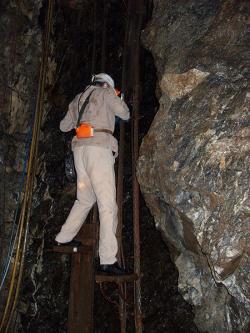
This silver mine preserves two features of bygone practice. One is the reversible waterwheel of the ore-hoist, which originally was installed in 1565 and currently dates back to 1824. The present wheel is 9 meters in diameter and reaches a depth of 700 meters.
Innovations
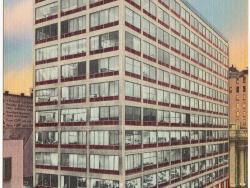
The use of heat pumps for the heating and cooling of the Commonwealth Building, initiated in 1948, was a pioneering achievement in the western hemisphere. The theoretical conception of the heat pump was described in a neglected book, published in 1824 and written by a young French army officer,…
Read More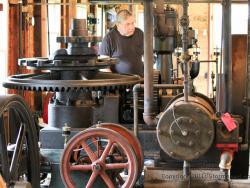
Early internal combustion engines produced only a few horsepower and were unable to replace steam engines in most applications until about 1890. By then, they were powerful enough for most portable or remote locations and many small manufactures. By 1900, they were replacing reciprocating steam…
Read More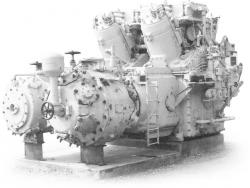
This compressor was a product of the combined technology and design heritage of both the C. & G. Cooper Company of Mount Vernon and the Bessemer Gas Engine Company of Pennsylvania, which had merged in 1929. Ralph L. Boyer, the chief architect of the GMV, worked for Cooper-Bessemer from 1926…
Read More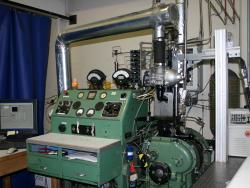
The Cooperative Fuel Research (CFR) engine is used extensively throughout the world for testing, research, and instruction in the performance of fuels and lubricants for the internal combustion engine. Principal design work on this prototype engine was accomplished by engineers of Waukesha Motor…
Read More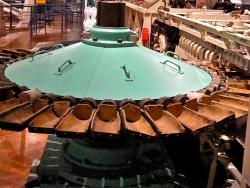
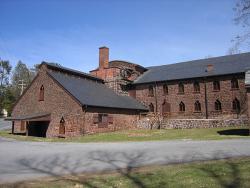
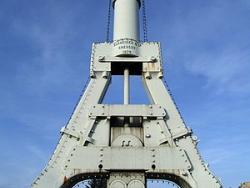


This is one of three nearly identical pumping stations that drained the Haarlemmermeer (Haarlem Lake), 1849- 52, then continued to maintain the polder's water table for more than 80 years. The Haarlemmermeer area covers 45,000 acres (about 70 square miles) in a triangular region between the…
Read More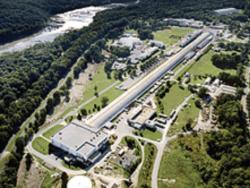
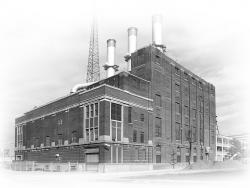
The concept of heating a number of buildings in the core area of a city from a single heating plant was introduced into the United States by Birdsill Holly at Lockport, New York, in 1877. The gain in thermal efficiency of a single large steam plant over a series of small isolated boilers led to…
Read More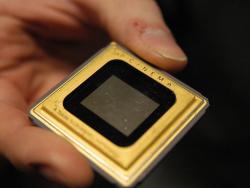
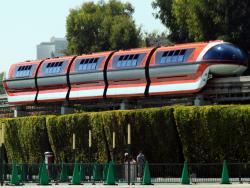
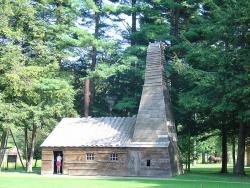

Designed by Sam Diescher, son-in-law of the Monongahela's designer John Endres, the Duquesne Incline opened May 20, 1877, as the second of seventeen built and operated in the Pittsburgh area. It has operated with only minor interruptions for the last one hundred years. A preservation group from…
Read More
Operated by the Philadelphia Electric Company (PECO), now known as Exelon Corp., Eddystone Station Unit #1 is a 325 MW pulverized-coal-fired plant that pushed the technology of steam-electric generating plants. When built in 1960, engineers sought to make a more efficient plant using higher…
Read More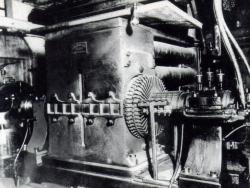
This dynamo, connected directly to a high-speed steam engine, was one of six that produced direct current at Thomas A. Edison's electric power station at 257 Pearl Street in New York City. The Pearl Street Station was the prototype for central station power generation. Edison set out in 1878 to…
Read More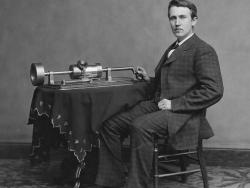
Edison's simple and unprecedented instrument allowed for the first time the permanent recording and reproduction of sound, especially the human voice. On December 6, 1877, Edison put tinfoil around the cylinder, turned the handle of the shaft and, shouting into one of the diaphragms, recorded a…
Read More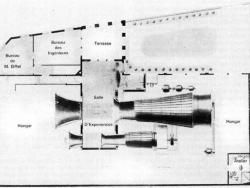
Late in life, the renowned structural engineer Gustave Eiffel (1832-1923) embarked on aeronautical research. Reliable data and repeatable research methods were rare in the early 1900s, but Eiffel brought an engineer's discipline to the field. In the process, he produced the most accurate…
Read More